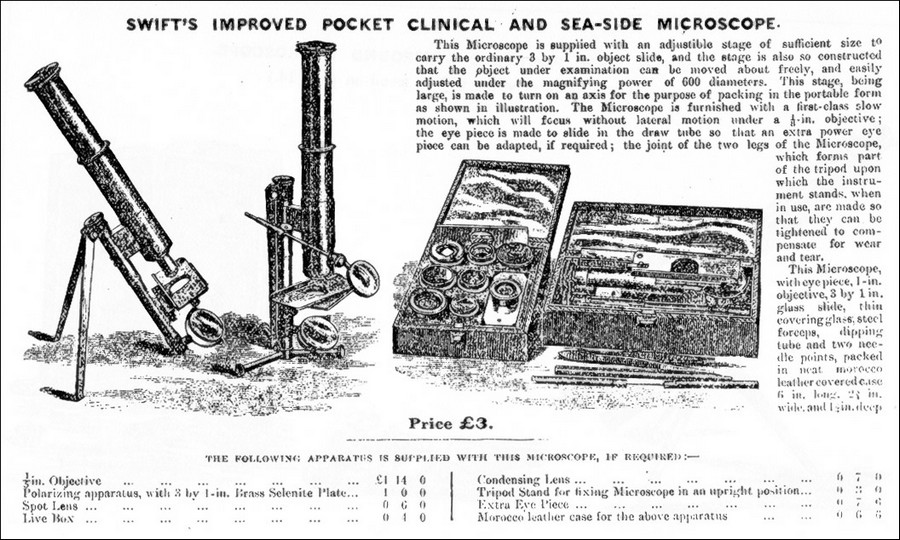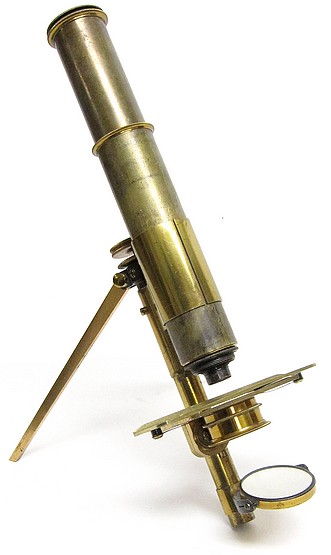
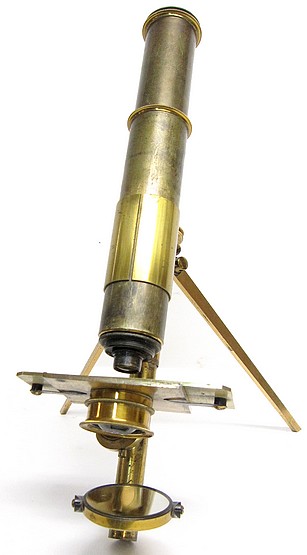
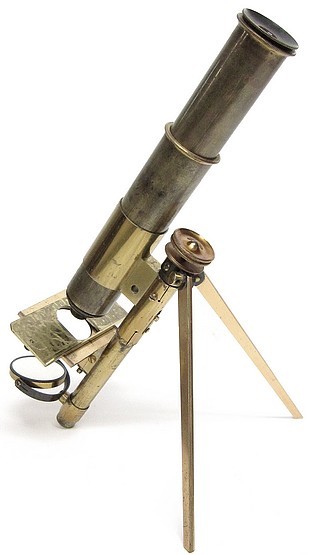
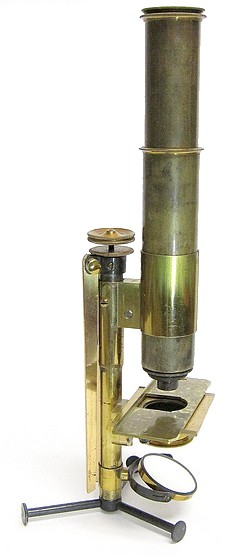
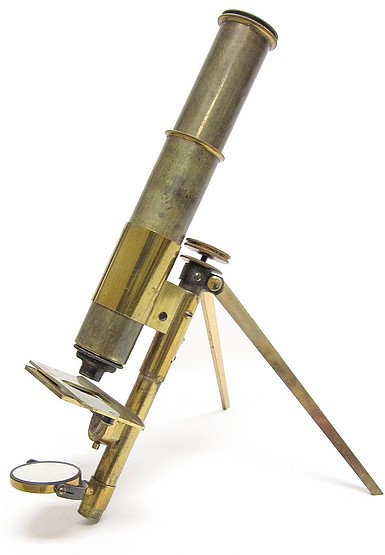
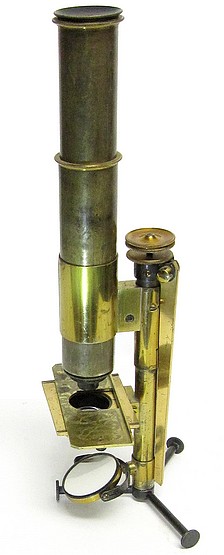
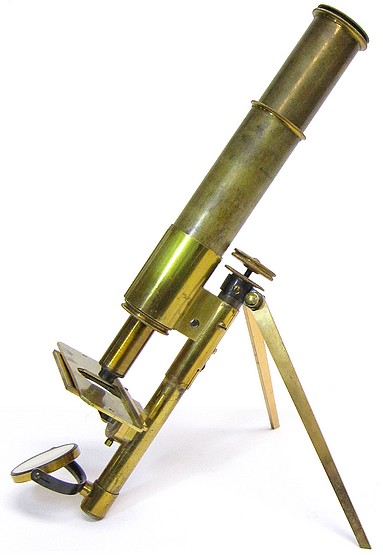
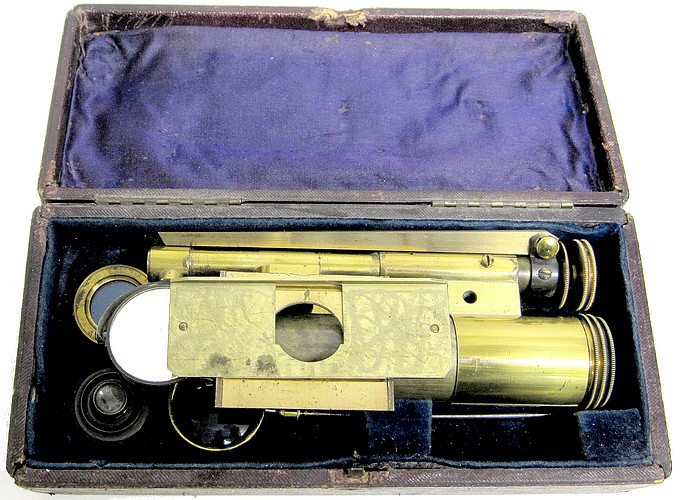
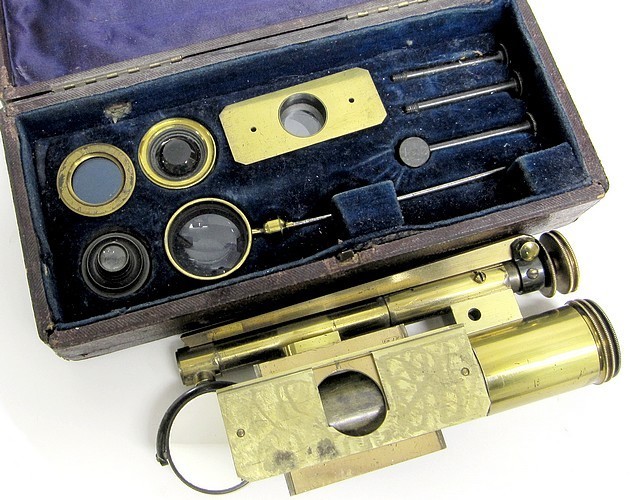
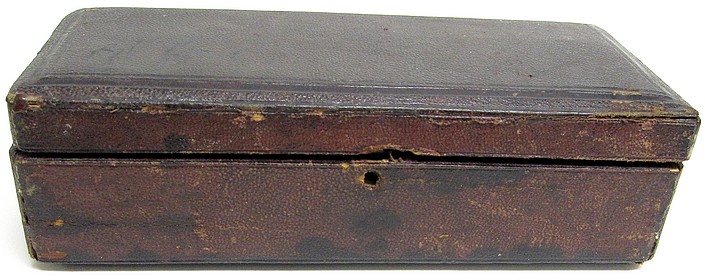
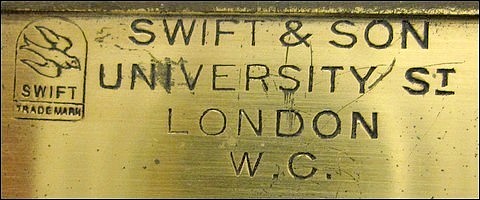
The microscope is signed on the stage: Swift & Son, University St, London W.C. with the Swift bird trade mark. The firm had this name and address during the years 1877-1881. In the 1870 Swift catalog, this microscope was referred to "Blankley's Small Pocket Microscope". In the book "The Microscope" by H. Van Heurck, 1893, the microscope is referred to as the "Seaside Microscope"; it is described and illustrated there as follows:
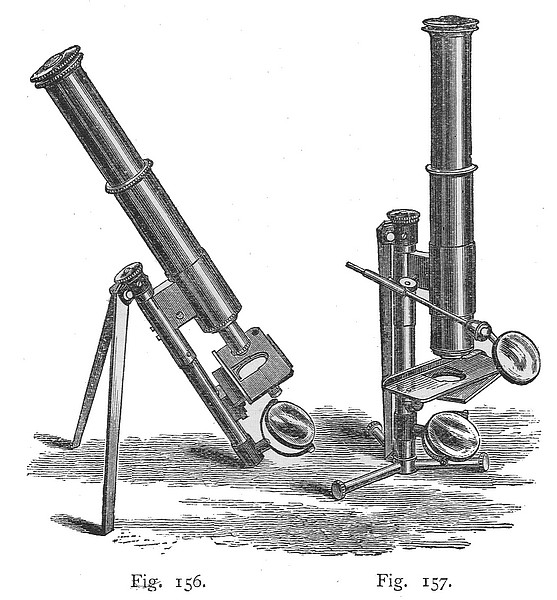
"The Seaside Microscope has still to be noticed. This microscope, as its name suggests, is made with the object of occupying the smallest possible space. It is furnished with a folding stage, rapid movement by sliding the tube, slow movement enclosed in the leg of the tripod, upon which the instrument stands, an ocular, and an inch objective (figs. 156 and 157). It can be packed in a box 15 centimetres (6 in.) long, 7 centimetres (3 3/4 in.) wide, and 5 centimetres (1 3/4 in.) deep. The price of this microscope is £3 10s."
This particular example is furnished with some additional accessories, among which are two objectives, a live box, a sub-stage fitting that can accommodate a dark-field condenser or a filter holder (3 different glass filters are present), a bulls-eye condenser, a slide carrier, and an auxiliary tripod base for use when the microscope is in the vertical position. The leather covered case has dimensions 7.5 x 3.25 x 2 inches. Charles Baker sold a similar microscope based on a design by William Moginie. John Browning also sold a similar small portable microscope. A modified version of this microscope was sold by Swift well into the the 20th century.
The follow article appeared in the journal Lancet, 1872 (refer to figs. 156 and 157 above)
IMPROVED POCKET MEDICAL AND
SEASIDE MICROSCOPE.
NUMEROUS as are the small microscopes for what we may term amateur work, there is a certain want for a compact instrument which can he stowed away in small compass, and which shall nevertheless be an instrument of sufficient power to he available for real work—for example, the examination of urine, sputa, tumours, &c. Such a microscope would be a boon to the medical man who is traveling about from place to place, as the Indian medical officer, one of whose chief objects is to avoid loading himself and his baggage with unnecessary impedimenta. To such men a big microscope is often more than a great evil—it is an impossible companion. Our attention has been called to a microscope of the kind, to which we refer, which, we think, has many excellent features about it. The above illustration represents the instrument—in the one case (left-hand view) as ordinarily used, and in the other upon a stand, which can be fitted to it if necessary. The instrument, comprising an inch objective, eye-piece, glass stage plate, three glass covers, steel forceps, diffusing tube, and two needle-points, packed in a neat morocco case 6 in. long by 2 3/4 in. wide, and 2 in. in depth, can be obtained for £2 15s.; a quarter-inch objective will be £1 extra, and the instrument with it will magnify 500 diameters. The microscope is provided with a first-class slow motion, which will focus steadily and smoothly under high magnifying power. The coarse adjustment for focusing low powers is effected by sliding the body of the microscope in its tube fitting. The body of the instrument is fitted with a long draw-tube, by which means the magnifying power of the objective can be greatly increased. The stage is so constructed that the object can be moved with great freedom, and for portability this stage being large, it is made to turn on a centre, so that it may be flat with the microscope for the convenience of packing in the small case described. The second illustration represents the instrument packed away in its case, and a box of accessories, which consist of spot lens for dark-ground illumination, condensing lens for the illumination of opaque objects, polarizing apparatus, with a 3 in. by 1 in. selenite stage plate, live box, and tripod stand for fixing the instrument in an upright position (see other figure); the whole of the apparatus thus described being packed in a neat leather-covered box 4 in. square by 1 1/2 in. deep. Price, including 1 in. objective, £3 7s. Packings are also supplied in the same case for two objectives and one extra eye-piece if required.
The instrument is made by Mr. Swift of University- Street, Tottenham-Court-Road.
